10 Reasons Why Having Sex Is Good For Your Health
(As the article below mentions my name, I got it from Google Alerts. It was written by by Parul Tyagi and published in EzineArticles I do believe that the writer is going too far (in my opinion, sex is good because it is good) but I decided to republish it here…)
Paulo Coelho’s book titled “Eleven Minutes” suggests that the “act of coming together” just takes about 2-3 minutes, while the remaining 9 minutes are no more than an attempt to reach the “crescendo” when a hormonal discharge provides ecstasy like none other!
Scientists have often debated that sex is extremely beneficial for our health, but the lack of sex in good measures can have negative effects. On the other hand, too much sex can also be harmful; if you indulge in sex for more than 3 times a week, you are exposing yourself to the risk of a weaker immune system as well as vulnerability to infections…
1. The balance of your mental and emotional health is definitely influenced by sex. While abstinence often leads to anxiety or paranoia and even depression…having sex can cure cases of light depressions. After having exercised sex, the brain releases endorphins that decrease stress and induce a wonderful state of euphoria.
2. For all you women, having regular sex means freedom from expensive salon treatments. An excellent beauty treatment, having sex actually doubles the level of estrogen in women and makes their hair shine with brilliance while making their skin supple and softer.
3. And if you want to live longer, then look no further than your own bedroom. According to a research carried out at Queens University in Belfast, Ireland, having regular sex increases the lifespan in humans. It was found that out of the people of the same age and health, those who had more frequent orgasms faced 50% less death rate than who people who didn’t have frequent orgasms.
4. Sex is an excellent deep-cleansing treatment as well. Since sex is a strenuous but enjoyable exercise, when you have sex the pores of your skin are cleansed leaving a brighter and glowing skin as well as decreasing the risk of developing dermatitis.
5. An inexpensive and pleasurable exercise, sex can make you lose weight. When you have sex after a candlelight romantic dinner, not only do you burn all the fat and carbohydrates you consumed, but you also stay healthy at no extra cost! Consider this: A single session of passionate, mind-blowing sex (even regular sex) can burn about 200 calories. This is equivalent to running for 15 minutes on a treadmill!
6. Ladies, if you like you man to have bulging biceps then have sex more often. Sex is a great way to strengthen muscles. Imagine the effort made by your man through those difficult pushes and flexions! Of course, it all depends on the stunts in your bed…but it’s definitely better than running for miles on miles.
7. The more active your sex life, the more attractive and irresistible you become for the opposite sex. Really! An active sex life means that your body gets into the habit of releasing more pheromones, chemicals that attract all those gorgeous, luscious women! No wonder Casanova was so popular!
8. Sex can sharpen your senses; especially enhance your sense of smell. After sex, prolactin is released that activates the stem cells in the brain to form new neurons in the olfactory bulb. This helps to improve your sense of smell.
9. A pain reliever, sex is TEN times more effective than painkillers such as Valium. Just before orgasm, the hormone oxytocin’s level rises almost 5 times, leading to release of large amount of endorphins. Endorphins are natural painkillers and relieve you of pain, minor headaches, and migraines without any after effects. Next time your lady has a headache, treat her with a vigorous session of lovemaking rather than a Valium.
10. The act of Kissing stimulates salivation, which helps clean food particles stuck between the teeth and lowers the acidity level in your mouth. This is the primary cause of tooth decay. So kiss all you want, after all it’s a great excuse!
So my dear friends, sex is not just good for the mind, the body, but the wallet as well!
Filed under: 10 Reasons Why Having Sex Is Good For Your Health
Dr. Katherine Benziger - Personality Assessment, Thinking and Working Styles
Dr Katherine Benziger is a true pioneer and leading expert in her field. Her work has for the past 25 years focused on the proper and ethical development and application of personality assessing in the global business environment. Significantly, Dr Benziger prefers the term personality assessing, rather than personality testing, to describe her approach. Katherine Benziger is keen to distance herself from the 'personality testing' industry, for which 'falsification of type', and the interests of the individual - rather than the organisation - are not generally seen as a priority concerns. For Dr Benziger they are.
See also the Personality Models and Types section which includes more about Benziger's theory in relation to Jung, Myers Briggs, Eysenck, and other personality theories.
Also importantly, Benziger's systems are not psychometric tests. Many non-scientific people now use the term 'psychometrics' to cover the wide range of systems and tools used in testing, measuring and assessing all kinds of attributes in people, but strictly speaking this is incorrect. The term 'psychometrics' actually means the psychological theory or technique of mental measurement. Psychometrics and psychometric tests in this pure sense are often (and in certain countries necessarily) practised and administered only by people holding a PhD in psychology. This inherently can cause 'pure' psychometrics theory and testing tools to be less accessible for typical business and organisational applications.
Benziger's work, model and assessment systems are instead based on the measurement of brain function and energy consumption in the brain. This study of brain function is a different science, and a more recent one than psychology and psychometrics (the study of brain function has for instance been particularly aided by the advent of recent brain scanning technologies such as PET and MRI). The accessibility and application of Benziger's work and systems do not suffer the same restrictions and limitations as pure psychometrics, and as such offer potentially enormous benefits to organisations.
Benziger is keen to focus on the common tendency of people in work, whether being assessed or not, to 'falsify type'. She rightly says that when people adapt their natural thinking and working styles to fit expectations of others, normally created by work and career, tension and stress results. People are not happy and effective if they behave in unnatural ways, and much of Benziger's work focuses on dealing with these issues and the costs of falsifying.
Relating directly to this is the work Arlene Taylor PhD, a leading specialist in 'wellness' since 1980, and collaborator with Benziger for much of that time.
Arlene Taylor's work has confirmed, and builds on, Benziger's observations about the cost of falsifying type, notably the identification anecdotally of a collection of symptoms (in persons who were falsifying type) which Taylor has labelled Prolonged Adaption Stress Syndrome (PASS).
PASS initially featured in the 1999 Taylor and Benziger paper 'The Physiological Foundations of Falsification of Type and PASS', and remains central to Benziger's and Taylor's work.
The complete family of symptoms which Dr Arlene Taylor identified within PASS (Prolonged Adaption Stress Syndrome), as linked to Benziger's Falsification of Type, are:
- Fatigue
- Hyper-vigilance
- Immune system alterations
- Memory impairment
- Altered brain chemistry
- Diminished frontal lobe functions
- Discouragement and or depression
- Self-esteem problems
Benziger's principal assessment system is called the BTSA (Benziger Thinking Styles Assessment), and it's also available online as the eBTSA from the Benziger website, where you can learn more about Katherine Benziger and her ideas. I'd also strongly recommend you read Katherine's book, Thriving in Mind, available via her website. The book enables the reader to perform a basic personality assessment using the Benziger model, which is highly illuminating.
| Here is a brief overview of Katherine Benziger's model: The brain has four specialised areas. Each is responsible for different brain functions (which imply strengths, behaviour and thinking style). The specialised areas are called 'modes'. Each of us possesses natural strengths in only one of these specialised areas, which causes us to favour and use a certain style ahead of others. (Outside of that one style, we may have strengths and weaknesses which are based on what competencies we have been exposed to, or developed, and indeed which competencies we have not been exposed to.) Dr Benziger refers to the natural specialised area as the preferred thinking and behavioural mode. If you buy the book there's an excellent and simple assessment to illustrate this point, although it relies on complete honesty when answering - if you are 'falsifying your type' then you will distort the analysis. | 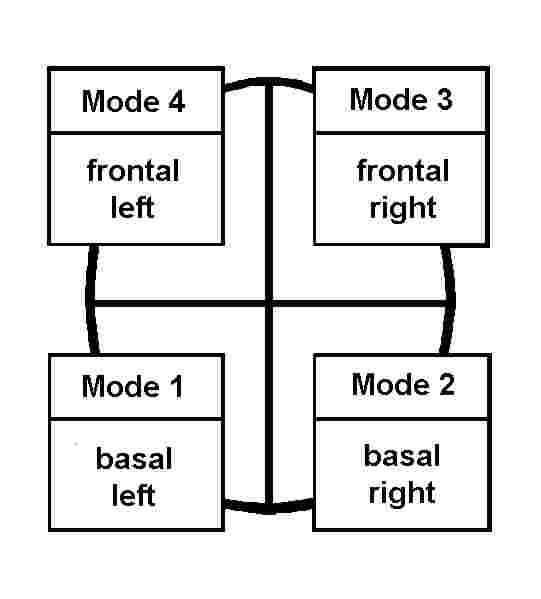 |
Dr Benziger illustrates a person's brain dominance (preferences and tendencies) in terms of a brain diagram (viewed from above) when the relative strengths for each specialised area are plotted using scores from an assessment to produce a rhombus or kite shape. There is no right or wrong shape. The diagram is simply a way of visualising the bias of a person's brain, and the parts used more and better than the others.
Benziger's brain type model
Dr Benziger's model uses this representation of the brain (viewed from above, top is front) and the definitions below.
 |
| mode | specialised area | brain functions | response to stimulus |
| 1 | basal left | Order and habit Ordered procedures Sequential routines | Remembers definitions. What is, is as described. |
| 2 | basal right | Spiritual experience Rhythm and feeling Harmony | Picks up emotional tone and the presence or absence of harmony (including harmony between people). What is, how we feel about it. |
| 3 | frontal right | Internal imaging Metaphor and imagination Expressiveness | Sees the essence of things, in pictures and metaphors. What is, is something meaning or enabling something else. |
| 4 | frontal left | Structural analysis Prioritising and logic Mathematics | Converts into logical results or effects. What is, leads to, or produces results. |
Benziger says that people can have one and only one natural lead in which their brain is naturally efficient. They can and often do develop competencies in other modes. When they do in practice they will be using more areas of their brain, and when they do this the competencies outside their natural lead are always very draining.
Using the Benziger methodology and descriptions, here are some examples of brain types (which determine thinking and working styles), starting with the four modes and descriptions of each, shown as single-brain patterns. If you want to learn what your own thinking and working style is, get the book Thriving In Mind, or visit the Benziger website.
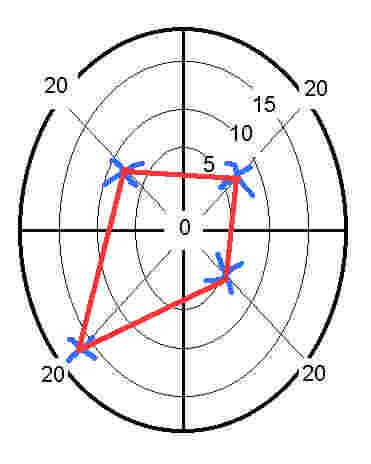 | Basal left - mode 1 Strong basal left gives good routine, sequential, process skills. Detailed, structured, ordered, efficient, dependable, reliable, builds and maintains orderly foundations. Follows instructions, does things by the book, step-by-step. Communicates in writing, detailed. Meets deadlines through following schedules and processes. Disciplined. Good attention to detail. Can appear laboured, bureaucratic, or obstinate. |
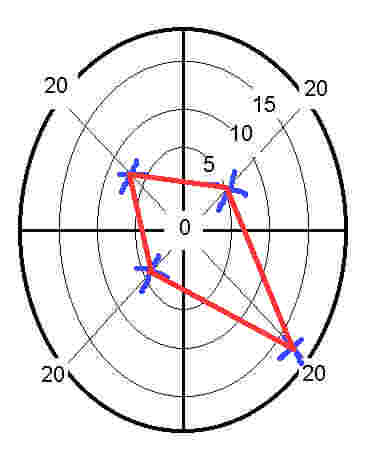 | Basal right - mode 2 Strong basal right gives good abilities in intuition, feelings, empathy, relationships, connecting with people. Good active listening skills, understands how people feel, sensitive, picks up moods and feelings. Singing, dancing, speaking and listening with the eyes, touching, reaching out to people. Caring, compassionate. Non-verbally able, notices body-language. Interpersonally good, attentive to relationships and people. Internal language is feelings. Likes to harmonise with their environment. Can be a soft-touch, making too many personal sacrifices, and can find it difficult to say no. Doesn't like to upset people. |
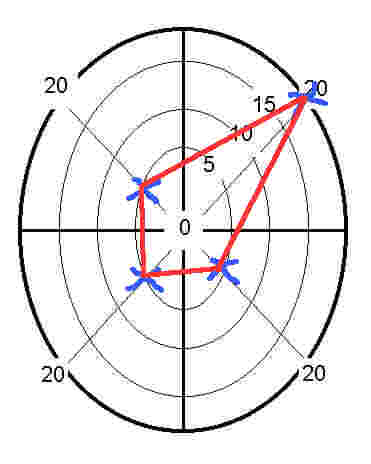 | Frontal right - mode 3 Strong frontal right gives good spatial and internal imaging, innovating and adapting. Can visualise, conceptualise, (eg good at packing a car boot/trunk. Able to grasp whole pictures, themes, from vague outlines or ideas. relates to cartoons and models and caricatures. They file visually - where they can see things, in stacks. Attentive to new ideas. Uses language to think out loud. Uses metaphors and word pictures. Expressive, at times looking within themselves to find or examine how best to paint the next word-picture. Enthusiastic and likes change. Gets bored. Can appear out of step, whacky, off-the-wall. Quirky sense of humour. At times to others can appear to have 'lost touch with reality'. Can change for change's sake. Good starters, not good finishers. |
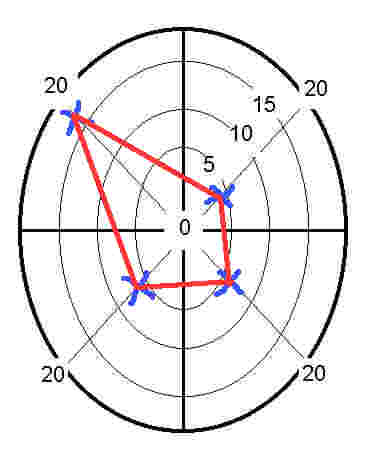 | Frontal left - mode 4 Strong frontal left gives good analytical skills. Good at mathematics. Uses signage and labels to analyse and store data Physical and mental data storage. Nonemotional. Uses critical analysis to assess causes and effects, to make decisions and announce actions to meet goals. Makes judgements. Results orientated. Calculates and uses diagnostic thinking. Logical, good at verbal argument. tactics, goal-setting and goal achievement. Manages resources to achieve objectives. Uses operational principles. Communicates in concise no-nonsense terms. Can be seen as cold and manipulating, uncaring, unfeeling. Puts the task before people. Will bend rules. Will make new rules. Not strongly creative. Not good with people directly. Not strongly supportive or nurturing. |
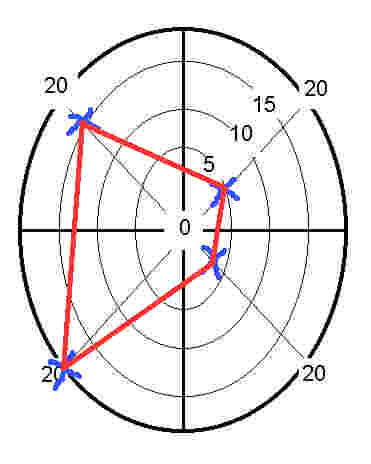 | Dual-brained - double left (modes 1 and 4) Strong frontal left and basal left skills. |
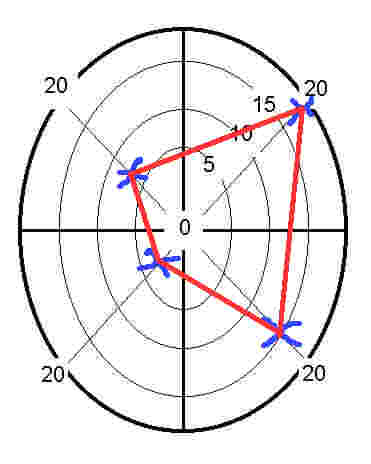 | Dual-brained - double right (modes 2 and 3) Strong basal right and front right skills. |
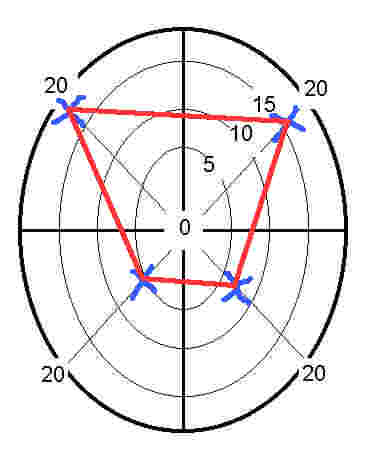 | Dual-brained - double frontal (modes 3 and 4) Strong frontal left and frontal right skills. |
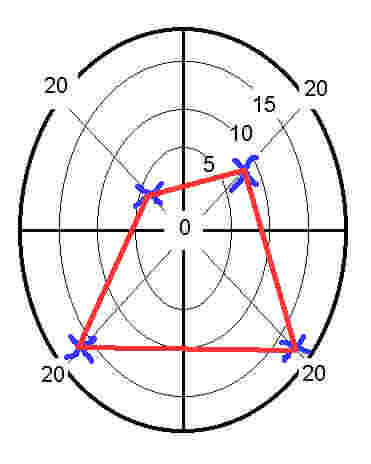 | Dual-brained - double basal (modes 1 and 2) Strong basal left and basal right skills. |
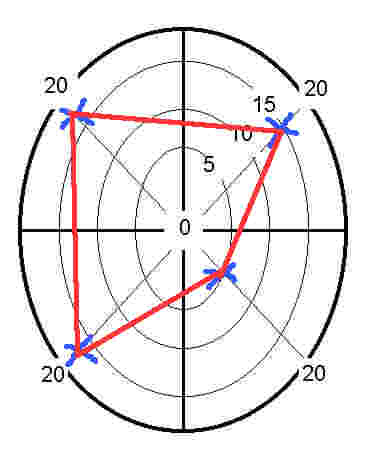 | Triple-brained pattern example Skills of strong frontal right and double left. The three other triple brain patterns: bl/br/fr, br/fr/fl, fl/bl/br. Triple-brained people are often 'translators', helping people with single or dual patterns to understand each other and co-operate. |
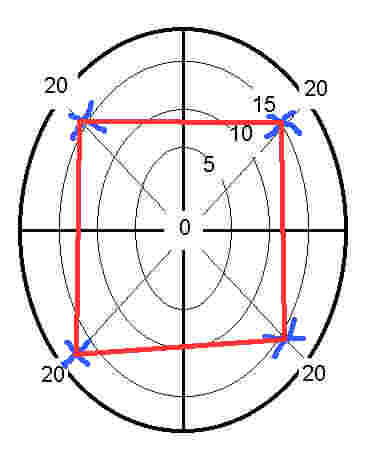 | Whole-brained pattern Only 5% of people are whole-brained. Strong in all four modes. A 'translator', helping others to understand each other and co-operate, but can be prone to indecision, and can dramatically change direction of career or personal direction. |
Benziger gives examples of jobs that are often comfortable with people who have developed a particular combination of modes. The list is by no means exhaustive:
| double lefts | lawyers, physicians, intensive care nurses |
| double lefts, with frontal left leads | accountants, MBA's, electrical engineers, hospital directors, implementer leaders, |
| double lefts with basal left leads | bankers, machine operators, machine repairers |
| basal lefts | ordering and purchasing clerks, record-keepers, filing clerks, book-keepers, personnel clerks, supervisors, head nurses, personnel officers, school administrators |
| basal rights | receptionists, communications specialists, pediatrics nurses, staff nurses, teachers, staff development specialists, trainers, community and public relations, |
| double basals | teachers, head nurses, supervisors |
| frontal rights | entrepreneurs, geologists, architects, illustrators, woodcraftsmen, |
| double rights | organisational development specialists, teachers, emergency doctors, dancers, painters, poets, |
| double rights with basal right leads | counsellors, psychologists, therapists, actors, musicians, interior decorators, |
| double rights with frontal right leads | counsellors, psychologists, therapists, psychiatrists |
| double frontals | inventors, chemists and chemical engineers, research scientists, economists, surgeons, hospital administrators, poets, composers, painters |
| basal left/frontal rights | journalists, librarians, community organisers, |
| triple-brain double right (right basal leads) with frontal lefts | poets, composers |
| triple-brain double left with frontal right leads | visionary leaders |
| whole-brained | leaders of large complex concerns |
Benziger model and other systems
Katherine Benziger makes several fascinating comparisons between the Benziger brain type model and other personality and behaviour systems:
Irwin Thompson's Archetypes in History (c 1970)
| Hunter | military general | frontal left |
| Leader | administrative leader | basal left |
| Shaman | spiritual leader | basal right |
| Fool | leader in impossible situations | front right |
DISC/Inscape/Thomas International/Performax etc (common usage in business since 1980s)
| Dominance | authoritative, decision-making, results-driven | double frontal, extraverted* |
| Influence | motivates, inspires, enthuses, leads, persuades | double right, extraverted |
| Steadiness | reliable, listens, follows routines and rules | double basal, introverted |
| Compliance | detailed, critical thinking, accurate | double left, introverted |
*See the Carl Jung definitions below of extraversion and introversion.
Carl Jung - Four Functions (c.1930)
| Thinking | analytic, objective, principles, standards, criteria, critiques | frontal left |
| Sensing | past, realistic, down-to-earth, practical, sensible | basal left |
| Feeling | subjective, personal, valuing intimacy, extenuating circumstances, humane, harmony | basal right |
| Intuition | hunches, futures, speculative, fantasy, imaginative | front right |
| Introversion | behaviour directed inwardly to understand and manage self and experience | |
| Extraversion | behaviour directed externally, to influence outside factors and events |
brain type, friendships, marriage and mating
Dr Benziger also makes interesting observations about relationships:
Most of us select friends who mirror our brain types. We do this because we feel comfortable with people whose mental preferences are like our own. If we find a friend with a near-identical brain type they are likely to become a 'best friend'.
The four most common brain developed patterns are: Double Basal, Double Left, Double Frontal and Double Right. As a rule people with such developed patterns find and make friends easiest, because there are simply more of them around than any other developed brain patterns. Single-brained people and multi-dominant triple- and whole-brained people find it more difficult to find friends, especially close friends because, simply there are not many people who have developed so many modes.
The search for a marriage and mating partner is different. Rather than try to 'mirror', we tend to choose marriage and mating partners with brain types that will complement our own, that will cover our weaknesses.
Understanding your own brain type, and therefore strengths and weaknesses, is helpful for self-development, managing relationships, managing teams, and generally being as fulfilled in life as we can be. Knowing your own strengths gives you confidence to take on responsibilities and projects in your own skill areas, and knowing your own weaknesses shows you where you need to seek help and advice.
The Brain Type model also explains very clearly that hardly anyone is good at everything, and even those who are, have other issues and challenges that result from their multi-skilled nature.
If you want to know more about Dr Benziger's theory visit Katherine Benziger's website, where more information and assessments are available.
--------------------------------------------------------
Source: www.businessballs.comsee also
- Erik Erikson's Psychosocial Theory of Human Development
- Personality Models and Types (including more about Benziger's theory in relation to Jung, Myers Briggs, Eysenck, etc)
- NLP (Neuro-Linguistic Programming)
- Transactional Analysis
- Howard Gardner's Multiple Intelligences theory
- Kolb's Learning Styles
- Kirkpatrick's Learning Evaluation Model
- Bloom's Taxonomy of Learning Domains (Educational Objectives)
- 360 degree appraisals tips
- employment termination, dismissal, redundancy, letters templates and style
- exit interviews, questions examples, tips
- grievance procedures letters samples for employees
- group selection recruitment method
- induction training checklist, template and tips
- job interviews - tips, techniques, questions, answers
- job descriptions, writing templates and examples
- performance appraisals - process and appraisals form template
- team briefing process
- training evaluation processes
- training and developing people - how to
Why Does Having a Son Reduce the Likelihood of Divorce?

That couples with sons have a lower probability of divorce than couples with only daughters is even more amazing given the fact that, as I explain in previous posts, violent men and sexually promiscuous people are more likely to have sons. I would think that domestic violence and sexual promiscuity (and extramarital affairs that result from it) would contribute significantly to the likelihood of divorce. So why, then, are couples with sons less likely to divorce?
Recall that a man’s mate value is largely determined by his wealth, status, and power, whereas a woman’s mate value is largely determined by her youth and physical attractiveness. This means that the father has to make sure that his son will inherit his wealth, status, and power, regardless of how much or how little of these resources he has. A working-class father still has to make sure that his son will inherit what little wealth he has, because the more the son inherits, the greater his expected reproductive success.
In sharp contrast, there is relatively little that a father (or mother) can do to affect the daughter’s expected reproductive success. Once she is born, there is very little parents can do to keep her youthful or make her more physically attractive.
The evolutionary psychological logic therefore predicts that the continued presence of (and investment by) the father is important for the sons, but not as much for the daughters. Strictly in reproductive terms, there is very little that fathers (or anyone else) can do for daughters beyond keeping them alive and healthy. The presence of sons therefore deters divorce and departure of the father from the family more than the presence of daughters, and this effect should be stronger among wealthy families.
Of course, strongly wedded to traditional social sciences as they are, the sociologists and demographers who discover that the presence of sons decreases the probability of divorce explain this finding by saying that fathers are considered to be more important for their sons’ lives than for their daughters’, and that the presence of sons encourages fathers to get more involved in child rearing, thereby lowering the likelihood of divorce. Of course, they are right; fathers are generally considered more important for sons than for daughters, and the presence of sons does encourage fathers to get more involved. But the social scientists cannot explain why this is so. Evolutionary psychologists can.
